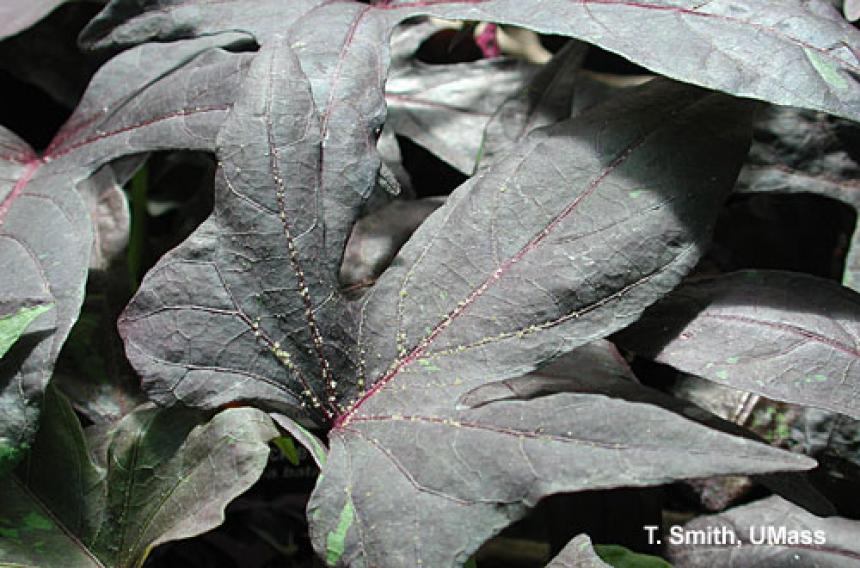Intumescences are small, bump-like protrusions on the surface of leaves, petioles and stems of affected plants. Intumescences are commonly called oedema or edema however, while intumescences and oedema or edema are often used interchangeable, research shows that the symptoms are caused by different factors and plant physiological responses in different plants. These are physiological disorders.
Current research points out that lesions on ivy geranium would be referred to as "oedema" while lesions on tomato, ornamental sweet potato and other plants would be referred to as "intumescence".
Oedema (edema) and intumescence are not caused by diseases like a bacterium, or a virus and are not transmittable from one plant to another. They are physiological disorders. Recent research indicates that light quality, specifically ultraviolet-B (UVB) radiation is directly related to preventing or minimizing intumescence symptoms on ornamental sweet potato and tomato, however has been found to have no effect on geraniums.
In recent research by Kansas State University, ornamental sweet potato cultivars were screened for susceptibility to intumescences. Out of 36 cultivars tested, 19 did not show any symptoms of intumescence development. According to the research, susceptible cultivars included 'Blackie', 'Black Heart', 'Desana Bronze', 'South of the border chipotle', 'Sweet Caroline Bronze', 'Sweet Caroline Sweetheart Red' and 'Tricolor'.
See the UMass Extension fact sheet: Oedema and Intumescence
